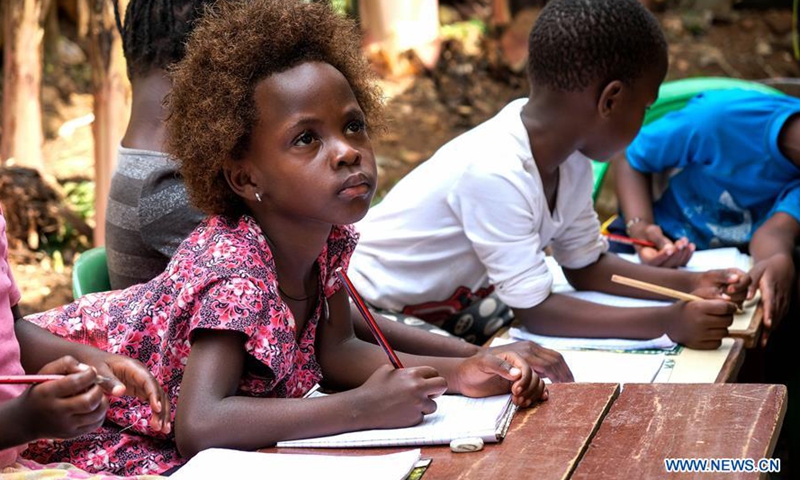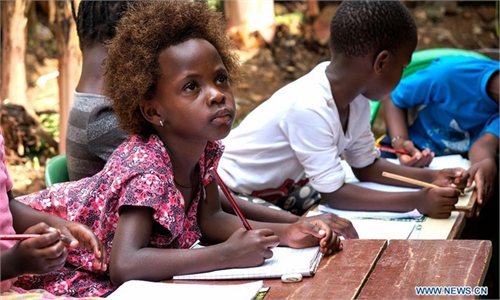A quarter-billion children have no proper access to education: UN

Children attend a provisional class organized by kindergarten teacher Juliet Namanda at her home in Kampala, capital of Uganda, June 19, 2020. About 10 children of different ages are receiving lessons from the teacher as schools are closed nationwide as a preventive measure against the spread of the COVID-19. (Photo by Hajarah Nalwadda/Xinhua)
Nearly 260 million children had no access to schooling in 2018, a United Nations (UN) agency said in a report on Tuesday that blamed poverty and discrimination for educational inequalities that are being exacerbated by the coronavirus outbreak.
Children from poorer communities as well as girls, the disabled, immigrants and ethnic minorities were at a distinct educational disadvantage in many countries, the Paris-based UN Educational, Scientific and Cultural Organization (UNESCO) said.
In 2018, "258 million children and youth were entirely excluded from education, with poverty as the main obstacle to access," the report found.
This represented 17 percent of all school-age children, most of them in south and central Asia and sub-Saharan Africa.
The disparities worsened with the arrival of the coronavirus crisis, which saw over 90 percent of the global student population affected by school closures, the report said.
And while children from families with means could continue schooling from home using laptops, mobile phones and the internet, millions of others were cut off entirely.
"Lessons from the past - such as with Ebola - have shown that health crises can leave many behind, in particular the poorest girls, many of whom may never return to school," UNESCO's director general Audrey Azoulay wrote in a foreword.
The report noted that in low- and middle-income countries, adolescents from the richest 20 percent of households were three times more likely to complete the first portion of secondary school - up to age 15 - than those from poor homes.
AFP



